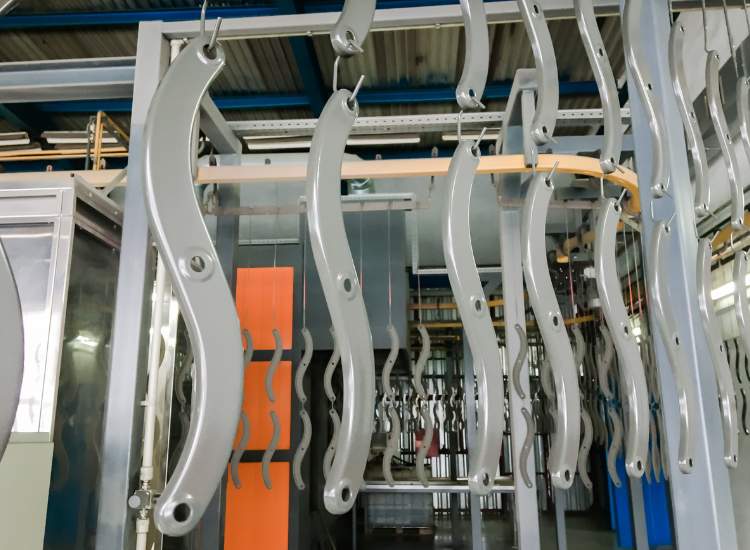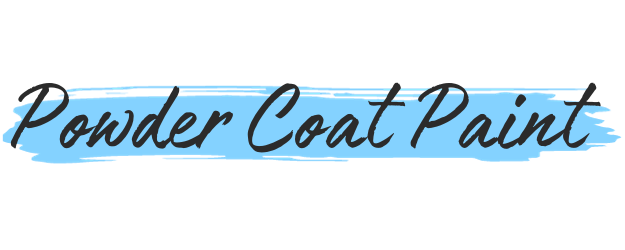What is Dip Powder Coating?
Dip powder coating is a popular technique used to apply a durable, protective finish to various metal and plastic surfaces.
This method involves dipping the items into a fluidized bed of colored powder particles, which adhere to their surfaces through electrostatic bonding.
Powder Coating in a Dip Tank
As you immerse material into powder, the particles’ electrostatic charge causes them to stick uniformly, creating a smooth, even layer.
After dipping, the object goes into an oven where it gets heated to a specific temperature. The heat melts and fuses the powder particles, forming a seamless, robust coating.

Dip powder coating offers numerous benefits, such as excellent wear and corrosion resistance, and it’s often chosen for applications where optimal protection and aesthetics are important. Some common examples include automotive parts, outdoor furniture, and electrical enclosures.
With many available colors and finishes, you can achieve a wide range of visual effects using dip powder coating. Furthermore, it’s a highly efficient process since any excess powder can be collected and reused, reducing waste and cutting costs.
Applications of Dip Powder Coating
Dip powder coating has several practical applications and can be found in a number of different industries.
- You may find it frequently used in the automotive and aerospace sectors. It’s a popular choice in these industries because of its durability, corrosion resistance, and wide variety of colors available.
- Home appliances and consumer electronics also benefit from dip powder coating. Makers of these products choose it for its scratch resistance and ability to increase product lifespan.
- In the construction sector, dip powder coating is used on outdoor materials and fixtures. This is due to its UV resistance and ability to withstand harsh weather conditions.
- Additionally, dip powder coating can be found in the medical field. It helps provide hygienic surfaces for equipment, enhancing patient safety and equipment lifetime.
- Lastly, sports equipment manufacturers utilize dip powder coating for a combination of reasons, including aesthetics, durability, and its ability to provide grip on various surfaces.
Process of Dip Powder Coating

Preparation
Before beginning, you must first clean your item thoroughly to remove any dirt, dust, or grease. This can be done using a mild detergent and a soft brush, then allowing it to air dry.
Immersing
Once your item is clean, you’re ready to immerse it in the dip powder. Carefully lower it into the container, ensuring it’s completely covered by the powder. Hold it there for a few seconds, allowing the powder to adhere to the surface.
Curing and Finishing
After removing your item from the powder, gently shake off any excess. Now, it’s time to cure the item. Place it in a curing oven at the required temperature and time according to the powder manufacturer’s instructions.
When the curing process is complete, your dip powder coated item is ready! Remember to handle it with care and enjoy the beautiful, durable finish provided by the dip powder coating process.
Benefits of Dip Powder Coating
Dip powder coating offers you several advantages as opposed to traditional liquid paint. First, it provides your surfaces with a durable and even finish that lasts a long time. You’ll appreciate its resistance to chipping, peeling, and scratches.
Dip powder coating is also cost-effective. Since it doesn’t need a liquid paint carrier, you can save on materials and waste reduction. Plus, it’s a straightforward process that doesn’t require complicated machinery or extensive training for your team.

Surprisingly, dip powder coating is eco-friendly too. The process involves minimal volatile organic compounds (VOCs) emissions. This means that you’re actively contributing to a cleaner environment with this choice.
Lastly, it offers you design versatility. Dip powder coating comes in a variety of colors, textures, and finishes, allowing you to create a unique and customized appearance for your products. You’ll enjoy flexibility and creativity in your projects with this beautiful coating technique.
Challenges in Dip Powder Coating
The first challenge you may encounter is achieving a uniform thickness. Since the object is submerged in the powder, it can be difficult to ensure a consistent coating on all surfaces. To overcome this, you may need to adjust the dipping speed and duration.
Next, dealing with excess powder can be another issue. After dipping, the object will likely have excess powder adhering to it, which could lead to a thicker coating and uneven finish. Implementing a proper recovery system to reclaim the excess powder is crucial for better results.
In some cases, contamination of the powder bath can occur. This might affect the quality of your final product. Maintaining cleanliness and frequent monitoring of the powder are key steps to prevent this problem.
Finally, not all materials are suitable for the dip powder coating process. Certain materials, such as those with complex geometries or heat-sensitive properties, may pose challenges. It’s important to assess your materials and consider other coating methods if necessary.
Related: When was powder coating invented?
